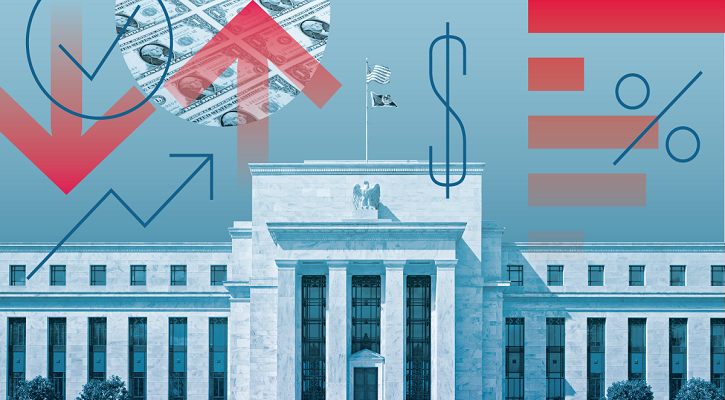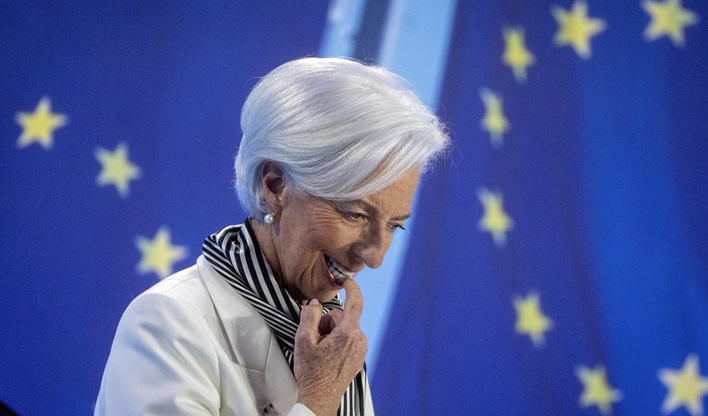
The super dollar does not scare European investors returning to US Treasury bonds.
Morningstar estimates that in the first nine months of the year, specialised active and passive funds on this asset class raised over € 25 billion in Europe, with annual organic growth (flows as a percentage of initial assets) of 54.7%. .
Looking only at the data on ETFs (Exchange traded funds), which are a low-cost solution to exposure to the dollar Treasury market, we see that they were the best bond category for net flows in the third quarter (+2.8 billion euros ).
US government bonds historically represent a port of call for investors fleeing risky assets in times of market turbulence, such as the current ones, because they allow them to invest in the government debt of the largest economy in the world whose currency is also the most important reserve currency.
"With the return of US bond rates to levels above 3.5%, government bonds can not only represent a source of diversification within portfolios, but also of income that until a year ago would have been achievable only by investing. in much riskier corporate or high-yield bonds ”, explains Nicolò Bragazza, senior investment analyst at MIM (Morningstar Investment Management).
Reasons for Investor Interest
The return of investor interest in US Treasury funds and ETFs is motivated by two fundamental considerations:
1) The monetary policy differences between the United States and other regions. "As early as the end of 2021, the Federal Reserve had begun sending strong signals of a change in monetary policy to combat mounting inflationary pressures," explains José Garcia-Zarate, associate director of research on passive strategies at Morningstar. “In comparison, other central banks, such as the ECB, have been more cautious. China also maintained an expansive stance because its economy is not doing as expected. As a result, bond spreads between the US and other areas have become favorable to Treasuries ”.
2) The Russian invasion of Ukraine has prompted investors to seek a safe haven. “The current situation reminds us that the US dollar remains the last safe haven for international investors,” comments Garcia-Zarate.
This is not the first time that divergent monetary policies have occurred between the Eurozone and the United States. For example, the graph below shows what effect they had on government bonds in March 2020.
The super dollar is a variable that cannot be ignored, because it makes US assets expensive for foreign investors, including European ones.
The reasons for the super dollar
The strength of the US currency against the euro is mainly attributed to the differences in monetary policy decisions made this year by the Federal Reserve and the European Central Bank. But the reasons must also be sought in the past.
"The US dollar has been strengthening for 11 years now and this is the longest cycle ever," said Stephen Dover, chief market strategist and head of the Franklin Templeton Institute . “Since May 2021, the nominal broad US dollar index - which measures the trade-weighted value of the US dollar against other currencies in emerging or advanced economies - has grown by 10%. This is the biggest advancement since 2014-2016 and has brought the index to its highest level since 2002 ”.
"Long-term trends in exchange rates typically reflect persistent differences in economic growth and returns on capital," continues the strategist, who points out that over the past 15 years, the US economy has grown faster, on average, than that of the other major developed countries.
In addition, interest rate differentials favored the dollar. After the great financial crisis of 2008, European and Japanese central banks drove bond rates and yields into negative territory, while the Fed “limited itself” to drastically reducing them.
"The prolongation of the war between Russia and Ukraine, the persistence of US inflation above the set target and few signs that other economies will perform better during the now inevitable global economic slowdown are all factors that suggest that the dollar will remain strong" says Dover.
To hedge the euro / dollar exchange rate risk or not?
The European investor in US government bonds has to consider whether or not to hedge the euro / dollar exchange rate risk. “This assessment requires a holistic view of the portfolio because, on the one hand, the dollar can represent an interesting source of diversification, on the other it exposes the portfolio to currency risk and an accurate balancing is necessary compatibly with the risk profiles”, admits Bragazza.
But what are the factors to consider?
"Often the choice to hedge the exchange rate is due to the fact that the additional exposure to currency risk can significantly increase volatility and therefore it is preferred to extract only the bond yield component adjusted for the costs of the hedge", explains the MIM analyst.
In this regard, it should be borne in mind that if the interest rate differential is sufficient, Treasuries can offer greater protection in periods of high market stress than European ones, including German ones, even when the exchange rate risk is hedged. Bragazza exemplifies with what happened in March 2020, in the first wave of the pandemic. "In that month, US dollar bonds with hedged currency risk performed significantly better than German and euro area government bonds in general."
The graph below shows the performance of the US government bond index compared to that of government bonds in euros in the case of non-hedging and hedging of the exchange rate risk.
US Government Bonds and Economic Scenario
US bonds are considered “risk-free” as they receive the highest ratings from agencies. But how do they behave in different economic and financial conditions?
“In general, a scenario in which high inflation is accompanied by a strong interest rate hike policy would be quite negative for this asset class,” says Bragazza.
"On the other hand, a recessionary scenario leading to a sharp cut in interest rates would potentially have positive effects on performance."
"Instead, it is for less clear-cut scenarios of a recession or an inflation shock that investors must adequately balance diversification needs with the search for higher yields, with the awareness gained during 2022 that even the safest bonds have their risks ".
Why Use US Government Bond ETFs?
For investors, choosing ETFs to get exposure to US Treasuries has several advantages, as Garcia-Zarate suggests.
After all, the US government bond market is very liquid and easily replicable with an index fund. ETFs also tend to track market performance, so investors can rely on some portfolio stability. Conversely, active managers have few avenues to generate additional value other than playing with duration, but transaction and turnover costs can nullify gains.
ETFs have low costs and offer many options, from exposure to the entire yield curve to exposure to specific segments, e.g. 1-3 years, 3-5, 5-7, etc.
Most dollar government bond ETFs available to European investors do not hedge currency risk, but some are Euro hedged, including Lyxor US Treasury 10 + Y (DR) UCITS ETF - Monthly Hedged to EUR, Lyxor US Treasury 1- 3Y (DR) UCITS ETF - Monthly Hedged to EUR, UBS (Lux) Fund Solutions - Bloomberg US 10+ Year Treasury Bond UCITS ETF (hedged EUR) and UBS (Lux) Fund Solutions - Bloomberg US 1-3 Year Treasury Bond UCITS ETF (hedged EUR).




























